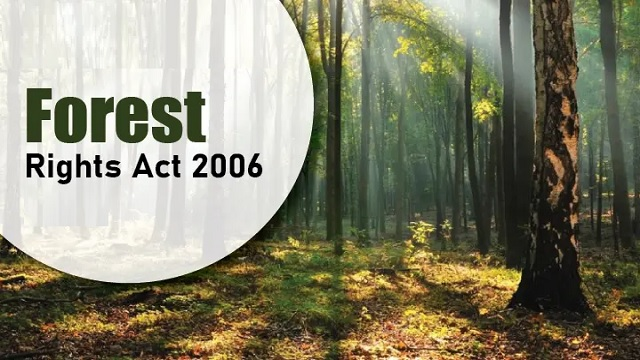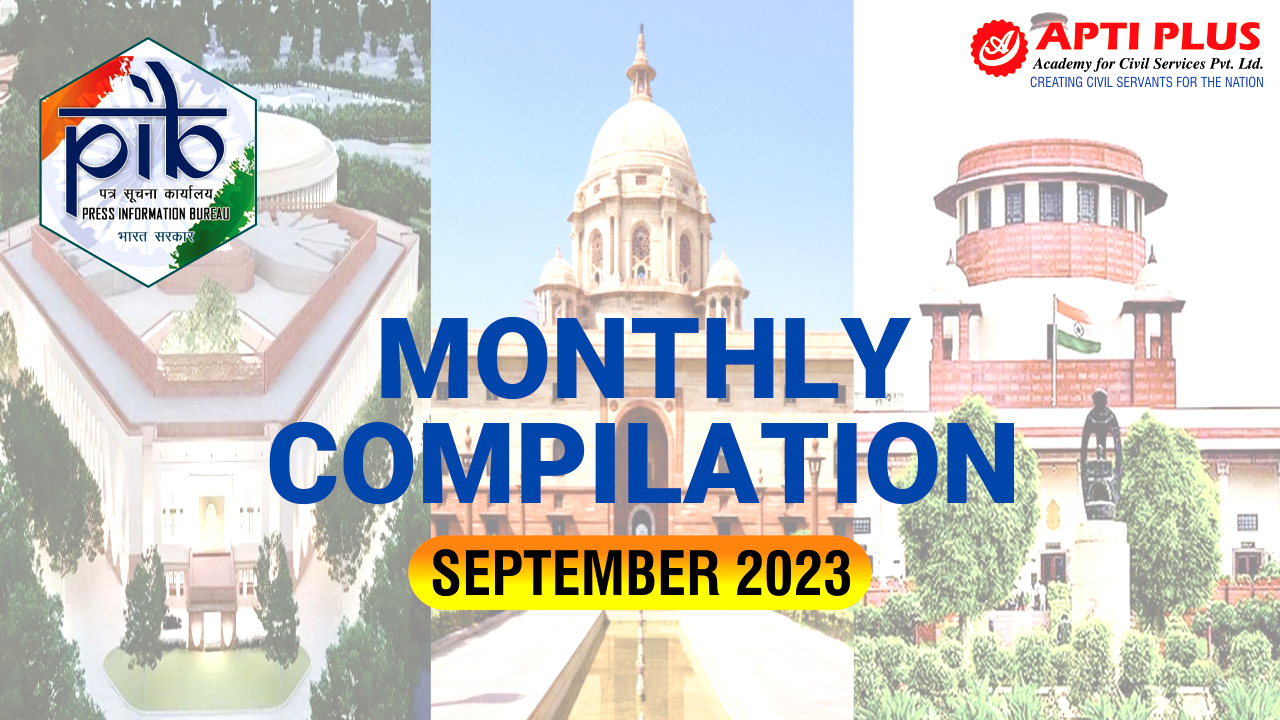Description

Copyright infringement not intended
Picture Courtesy: kalingatv.com
Context: The Jharkhand government has initiated a special drive called "Abua Bir Dishom Abhiyan" to provide land title certificates to individuals and communities under the Forest Rights Act.
Details
- The Forest Rights Act officially known as the Scheduled Tribes and Other Traditional Forest Dwellers (Recognition of Forest Rights) Act, 2006, grants rights to self-cultivation and habitation through Individual Forest Rights (IFR) and Community Forest Rights (CFR).
About Abua Bir Dishom Abhiyan
- The Department of Scheduled Tribe, Scheduled Caste, Minority, and Backward Class Welfare has instructed all 24 Deputy Commissioners to establish or reconstitute Forest Rights Committees (FRC) at the village level. Monitoring committees have been formed at sub-divisional and district levels.
- District Commissioners were directed to organize Gram Sabhas in all villages to facilitate the formation of FRCs, with the presence of an observer. A special Gram Sabha will be held in all villages from November 1 to 15 to consider both new and pending or rejected claims.
- The government is collaborating with organizations that have experience in implementing the Forest Rights Act in other states, such as the Foundation of Ecological Security (IES) and the Indian School of Business (ISB).
Challenges faced in implementing this drive include:
- Some forest officials view forest dwellers as encroachers, which can hinder the process. Changing this mindset is essential for fair implementation.
- The hierarchical structure of reporting and verification involving circle officers, district welfare officers, additional collectors, and deputy commissioners can complicate the process. Additionally, there is a shortage of forest rangers.
- The year 2024 will be an election year for both Lok Sabha and Vidhan Sabha, which may create additional challenges in the implementation of the Forest Rights Act.

Recognition of Forest Rights Act 2006
- The Recognition of Forest Rights Act, 2006, also known as the Forest Rights Act (FRA), is a landmark legislation that aims to empower and protect the rights of forest-dwelling communities, especially the Scheduled Tribes (STs) and other traditional forest dwellers (OTFDs), who have been living in forests for generations but whose rights were not recorded or recognized by the colonial and post-colonial forest laws.
The FRA covers two categories of rights holders:
- Forest-dwelling Scheduled Tribes (FDSTs) are members of the Scheduled Tribes as specified in the Constitution of India and who primarily reside in and depend on the forests or forest lands for bona fide livelihood needs.
- Other traditional forest dwellers (OTFDs), who are not members of the Scheduled Tribes but have been residing in the forest or forest land for at least three generations (75 years) prior to 13 December 2005 and who depend on the forest or forest land for bona fide livelihood needs.
It recognizes a range of rights of forest dwellers, such as:
- Right to hold and live in the forest land under individual or common occupation for habitation or self-cultivation for livelihood.
- Right to own, collect, use and dispose of minor forest produce.
- Right to protect, regenerate, conserve or manage any community forest resource.
- Right to access, use or dispose of water bodies, grazing grounds, sacred sites and other community resources.
- Right to habitat and habitation for primitive tribal groups and pre-agricultural communities.
- Right to access biodiversity and community right to intellectual property and traditional knowledge related to biodiversity and cultural diversity.
- Right to the conversion of pattas or leases or grants issued by any local authority or any State Government on forest lands to titles.
- Right to settlement and conversion of all forest villages, old habitation, unsurveyed villages and other villages in forests into revenue villages.
- Right in or over disputed lands under any nomenclature in any State where claims are disputed.
- Right to rehabilitation in case of displacement from forest land.
- Right to free prior informed consent in case of resettlement or diversion of forest land for other purposes
The FRA lays down the duties of the holders of forest rights, such as:
- To protect the wildlife, forest and biodiversity.
- To ensure that adjoining catchment areas, water sources and other ecologically sensitive areas are adequately protected.
- To ensure that the habitat of forest dwelling STs and other traditional forest dwellers is preserved from any form of destructive practices affecting their cultural and natural heritage.
- To ensure that the decisions taken in the Gram Sabha to regulate access to community forest resources and stop any activity which adversely affects the wild animals, forest and biodiversity are complied with
Process under the Forest Rights Act (FRA)
- FRA vests the authority to initiate recognition and verification of forest rights in the Gram Sabha, a village assembly comprising all adult members of a village.
- Individuals or communities submit claims to the Gram Sabha, which then verifies the claims using evidence such as documents, maps, and photographs.
- Gram Sabha passes a resolution recommending verified claims to the Sub-Divisional Level Committee (SDLC) constituted by the State Government.
- SDLC examines the Gram Sabha's resolution and reconciles it with government records.
- SDLC prepares a record of forest rights based on the verification process.
- SDLC forwards the record with recommendations to the District Level Committee (DLC), constituted by the State Government.
- DLC approves or rejects claims after consultation with SDLC.
- DLC hears petitions from individuals aggrieved by SDLC's decisions.
- DLC issues a certificate of title specifying the nature and extent of recognized forest rights to approved claimants.
- State Government establishes a State Level Monitoring Committee (SLMC) to monitor the process of recognition and vesting of forest rights.
- SLMC submits a report on the implementation status of the FRA to the nodal agency at the central level, the Ministry of Tribal Affairs.
The FRA is significant for several reasons. It seeks to:
- Redress the historical injustice done to forest dwellers by colonial and post-colonial forest laws that deprived them of their rights over forest land and resources.
- Recognize and respect the diverse customary practices, knowledge systems and institutions of forest dwellers that have sustained forests for centuries.
- Enhance the livelihood security and food sovereignty of forest dwellers by granting them legal access to minor forest produce, which is a major source of income for many.
- Strengthen local self-governance and democracy by empowering Gram Sabhas as the primary authority for decision-making on forest matters.
- Promote conservation and sustainable management of forests by involving forest dwellers as partners and stakeholders in protection, regeneration and restoration activities.
- Support social inclusion and gender equity by ensuring that women, Dalits, adivasis and other marginalized groups have equal rights and representation in forest governance.
The FRA faces many challenges in its implementation. Some of these are:
- Lack of awareness and capacity among forest dwellers, government officials, civil society organizations and other stakeholders about the provisions and procedures of the Act.
- Resistance and opposition from the forest department, revenue department, mining industry, wildlife conservationists and other vested interests who perceive the Act as a threat to their control and interests over forest land and resources.
- Delay and denial of claims due to bureaucratic hurdles, procedural complexities, insufficient evidence, faulty verification, political interference and corruption.
- Violation and dilution of the Act by state governments through contradictory laws, rules, policies and orders that undermine the rights and role of Gram Sabhas.
- Diversion and acquisition of forest land for development projects such as mining, dams, roads, industries, etc., without the free prior informed consent of Gram Sabhas and without ensuring compliance with the Act.
- Displacement and eviction of forest dwellers from their land and habitat in the name of conservation, tourism, wildlife protection, etc., without recognizing their rights and providing adequate rehabilitation.
- Conflicts and disputes among forest dwellers, between forest dwellers and non-forest dwellers, and between forest dwellers and government authorities over the boundaries, ownership and access to forest land and resources.
Way forward to ensure the effective implementation of the FRA
- Creating awareness and building capacity among forest dwellers, government officials, civil society organizations and other stakeholders about the provisions and procedures of the Act.
- Strengthening the role and functioning of Gram Sabhas as the primary authority for decision-making on forest matters.
- Streamlining the process of recognition and verification of forest rights by simplifying the forms, guidelines, evidentiary requirements, etc.
- Ensuring transparency and accountability in the process of recognition and verification of forest rights by making the records public, conducting social audits, establishing grievance redressal mechanisms, etc.
- Resolving conflicts and disputes over forest land and resources by facilitating dialogue, negotiation, mediation and arbitration among the parties involved.
- Protecting forest land and resources from diversion and acquisition by ensuring compliance with the Act, obtaining free prior informed consent of Gram Sabhas, conducting social impact assessments, providing fair compensation and rehabilitation, etc.
- Promoting conservation and sustainable management of forests by involving forest dwellers as partners and stakeholders in protection, regeneration and restoration activities.
- Monitoring and evaluating the progress and impact of the implementation of the Act by collecting data, conducting surveys, generating reports, etc.

Conclusion
- The Recognition of Forest Rights Act, 2006 is a historic legislation that has the potential to transform the lives of millions of forest dwellers in India. It is also a crucial step towards achieving the goals of social justice, ecological sustainability and democratic governance. However, to realize this potential, there is a need for concerted efforts from all stakeholders to overcome the challenges and ensure the effective implementation of the Act.
Must Read Articles:
Forest Conservation Rules 2022 v/s Forest Rights Act 2006: https://www.iasgyan.in/daily-current-affairs/forest-conservation-rules-2022-vs-forest-rights-act-2006#:~:text=The%20Forest%20Rights%20Act%20
|
PRACTICE QUESTION
Q. What are the key provisions and objectives of the Recognition of Forest Rights Act 2006 in India, and how has it impacted indigenous communities and forest conservation efforts?
|












